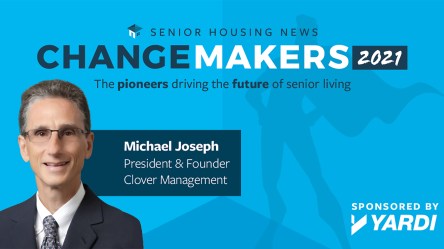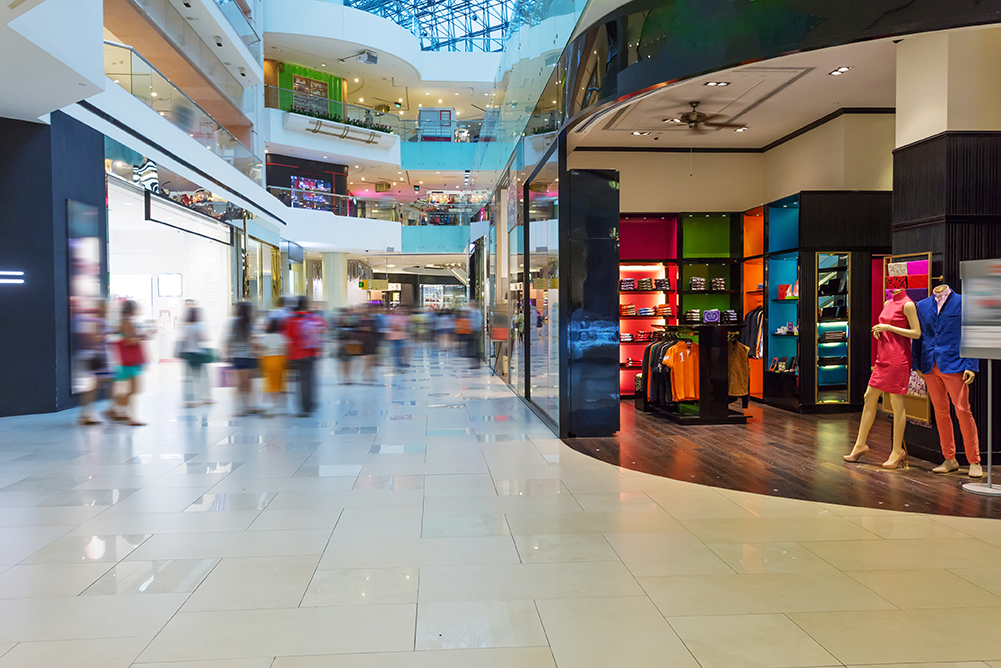How does somebody live to be 100? Genes, environment or just luck? In the 20th century the average life expectancy rose 30 years, the greatest gain in 5,000 years of human history, according to health information source Prevention, which also said that the centenarian club increased 51% between 1990 and 2000. What explains this progression? Advances in health, education, disease prevention and treatment certainly played key roles. But, Gregg Easterbrook reported in The Atlantic in 2014, “Viewed globally, the lengthening of life spans seems independent of any single, specific event. It didn’t accelerate much as antibiotics and vaccines became common. Nor did it retreat much during wars or disease outbreaks.” Documentarian Jason Prall interviewed centenarians in nine countries in an attempt to gauge the impact of lifestyle, environment and mindset on longevity. Some of the common denominators he identified were simple yet impactful choices in food, exercise and social interaction. “If you want to keep your brain young, music, movement and engaging with others, those three things, I would say are the most important things you can do,” Prall said. “We also need to have fun, enjoy our lives, find something meaningful and be passion-driven, whether it’s art or whatever it is.” Most researchers agree that key elements of a supportive living environment include exercise, stimulating interpersonal relationships, a positive attitude about challenges, and access to green space, health care and good nutrition. “Constant interaction with other people can be annoying, but overall seems to keep us engaged with life,” said Thomas Perls, a professor at Boston Medical Center. But of course it’s not that simple. “Lifestyle studies of centenarians can be really puzzling,” noted Brian Kennedy, CEO of the Buck Institute, a research facility dedicated to extending the human life span. “They smoke...
ESG Strategies
For Retail CRE
Dealing with the effects of the COVID-19 pandemic has made commercial real estate landlords and tenants focus on new strategies for employee safety. Simultaneously, the industry has had to adjust protocols and practices as calls for equity have become corporate priorities throughout the U.S. and the world. This has created a focus on ESG (Environmental, Social and Governance) strategies to analyze and identify risks, health and growth opportunities. It requires participation from everyone – landlord to office employee to maintenance technician – to foster an atmosphere of inclusiveness. Most companies will endeavor to create a culture that sustains a positive environment, especially as many businesses are re-entering the physical workspace. Examples of unique benefits come from Brixmor Property Group, a company who owns and operates over 400 retail centers across the country. As a response to the pandemic, they implemented a mental health awareness program, offering free access to licensed therapists for all employees. Brixmor also created personal development accounts to encourage growth through professional and personal training. These accounts have been used for something as adventurous as sailing lessons or as work-focused as Excel classes. Daren Moss, Brixmor senior vice president, explained on a recent ICSC webinar that the company has also created company-wide awards recognizing community service and ingenuity. These, among other initiatives, help make employees feel they are part of a unique and healthy workplace, while encouraging work-life balance. Companies often have mission or value statements that promote diversity and inclusion, but taking action can be more challenging. Brixmor created a leadership council to assist in best practices and behaviors to promote inclusiveness. This has improved diversity in recruitment and hiring. Mental health has also come to the forefront during the pandemic. Lockdowns, isolation, fear and illness have all had adverse...
BI Tech Benefits
Explored in Upcoming Webinar
What should leaders and investors consider when selecting a business intelligence (BI) solution for senior living? That’s the topic of an upcoming webinar sponsored by Yardi and hosted by McKnight’s Senior Living. The webinar, Differentiators in Business Intelligence Technology, will feature industry experts across senior living. This includes: Trey Allen, Yardi Support Specialist, Dominion Senior LivingMichael Bowles, Project Coordinator, Dial Senior Living Through an informative discussion, attendees will access the tools, tips and insights needed to choose an effective BI solution — and learn how to maximize their use of BI technology. More specifically, attendees will learn: How business intelligence reduces workloads and helps visualize data Key factors to consider when selecting BI software for senior livingAn analysis of Yardi Senior IQ, a single connected BI solution, plus client testimonials The webinar will take place on June 16 at 1 p.m. EDT. Want to learn more about selecting the right BI solution for senior living? Register for the webinar. Looking for additional resources on business intelligence? Explore Yardi’s ebook, Differentiators in BI...
Changemakers Series
Michael Joseph, Clover Group
How can senior living leaders drive change, all while prioritizing resident care in their communities? Ask Michael Joseph, founder and president of Clover Group and member of the 2021 Changemakers class. From building a company model to serve middle-income seniors in independent living — to operating 40 communities with expansions on the way — Michael has become quite the industry trailblazer. In this year’s Changemakers series, a collaboration between Yardi and Senior Housing News (SHN), interviews are conducted with pioneers across the industry. For Michael Joseph, his unique pathway to serving the middle market has earned him the Changemaker honor. Check out this excerpt from the SHN interview where Michael highlights his approach in navigating change, along with his strategies for shaping the middle-income segment in senior living. Can you highlight a few changes that you have driven that you are most proud of, or that you believe have been most significant to Clover or the industry? I think the greatest achievement we’ve done at Clover started with the very first deal. I think the greatest achievement is that we focused on a segment of the society that no one else focused on, which was the middle-income, independent living person. The focus at the time and frankly until very recently was the wealthy — with either what was then called assisted living, or upscale senior communities like Del Webb-type places — and then the poor, where you had low- to moderate-income tax credit deals to provide senior housing, and subsidized nursing homes. What we didn’t have was anybody focusing on the healthy, middle-income person, who had very terrible options at the time. Their options were to move in with one of their kids, stay in a house that they could no longer really live...
YASC Global
Virtual Event a Success
More than 17,000 participants from 64 countries collectively viewed 60,000 classes about Yardi products and initiatives from May 18-20 during the third virtual Yardi Advanced Solutions Conference (YASC) Global event held during the pandemic. Many of the spotlight sessions offered highlighted ways that Yardi technology has helped clients, their employees and customers adapt and thrive with technology during a time when limited contact has been a priority. The event again utilized the Yardi Aspire platform to deliver customized educational content. YASC attendees also enjoyed a virtual fundraising concert by guitarist/songwriter Jason Mraz. Each view of the performance generated a donation from Yardi, raising nearly $100,000 for COVID-19 relief initiatives. Meditation and mindfulness sessions were available for attendees to enjoy during short breaks between classes. Highlights from some of the featured spotlight sessions included: Marketing and automation solutions for residential Optimized marketing, automated chatbots and accessible self-guided tours were among the highlights presented in the residential spotlight session. These fully integrated Yardi solutions are among the ways multifamily clients have continued to see success during the pandemic. “I want to show you what’s possible when you have the right digital marketing strategy in place,” said Esther Bonardi, vice president of marketing at Yardi. “I bet you have a website. But do you have a comprehensive marketing strategy in place that can help you get your properties on page one of search results and get your customers directly to your website so that you can convert them into paying renters, faster?” RentCafe Reach helps clients attract qualified prospects with advanced search marketing services. The platform is currently optimizing more than 2,000 industry websites for organic search and driving rent-ready leads to managers. “This is the most cost-effective marketing channel,” Bonardi said. “And you can target exactly the traffic you need for the moment or availability you’re in.” Additional features like reputation management, search, and a new marketing analytics tool called Marketing IQ were also presented. “Marketing IQ is a one stop shop for all the data you need to make marketing decisions,” Bonardi said. “It’s really all for the purpose of improving your marketing ROI, which ultimately leads to a stronger NOI.” Once you’ve got a prospect on the line, engaging immediately to answer their questions is of paramount importance. But what if it’s after hours or your leasing office is closed for the weekend? That’s where chatbots come in. “Your prospective residents want and expect answers quickly, whether you’re open or not, or they quickly move on. This is especially true for popular new channels like text and chat,” said Paul Yount, industry principal for RENTCafé. “Bots and multiple touring options can really complement each other when they work together hand in hand.” Yount demonstrated a full conversation with a chatbot that answered questions about a property’s electric vehicle charging stations, pet policy, availability and pricing. He was able to schedule a self-guided tour via text and then showed how further AI automation can continue to answer questions even when the leasing office was closed during the tour. From a property manager’s perspective, the latest multifamily technology from Yardi not only solves for social distancing and accessibility but reduces staff time spent following up on prospect questions or even leading in-person tours. Proptech trends for the commercial sector Rob Teel, senior vice president of global solutions at Yardi, shared that for him, the most overwhelming CRE proptech trend in the last 12 months has been increased technical adoption. “That means paperless and contactless transactions, and online communication. When I think about paperless transactions, one of the best examples of innovation that helps eliminate that last piece of paper in the organization – which we’re all trying to do – is our e-signature capability for leases. You can now publish a lease for signature, there’s no exchange of FedEx documents and no meeting to get a wet signature. Paperless transactions and...
Cascadia’s Success
With Senior IQ
How does Yardi Senior IQ help senior living leaders streamline operations, save time and ensure data integrity? Here to share first-hand experience is Cascadia Senior Living & Development, a Yardi client operating 13 senior living communities — with new developments and expansions on the way. Founded in 2013 and based in the Pacific Northwest, Cascadia manages senior housing properties with a focus on independent living, assisted living, memory care and respite care. With communities in Washington and Oregon, Cascadia provides excellent care in settings intentionally designed for interaction and engagement. To learn more about their journey with Senior IQ, we interviewed Chief Financial Officer Michael Schefter. He broke down Cascadia’s challenges prior to using Senior IQ — and how the solution led the company to success. The Challenge: Jeopardized Data Cascadia was manually pulling data from disparate sources. With rapidly expanding communities and a larger pool of metrics, data integrity became a primary concern. The demand for accurate, high-level insights meant Cascadia needed a single connected solution to minimize risks, streamline operations and save time. The Solution: Yardi Senior IQ Yardi Senior IQ is a business intelligence solution that surfaces real-time data in attractive, sharable dashboards. Drawing portfolio-wide data from Yardi Voyager, the solution provides pre-configured Key Performance Indicators (KPIs) that help visualize important metrics and industry benchmarks. Senior IQ provides the insights needed to act confidently and make smarter, faster decisions. The Story: Real-Time Data, Precise Insights & Streamlined Operations With Senior IQ as their BI solution, Cascadia’s data-pulling processes became automatic. No more devoting hours extracting raw data each month — manually searching for specific metrics, making calculations and transposing data into graphs and slide decks. And by working with the Yardi team to build custom dashboards, Cascadia began targeting...
Is Train Travel
Getting Back on Track?
Most people are aware of the challenges that the pandemic has posed for operators and customers of U.S. airlines, which moved 927 million passengers in 2019. How about train travel, which 32.5 million passengers – more than the population of Texas – chose during the 2019 fiscal year? As national railroad service Amtrak begins to recover from a 95% drop in ridership at the outset of the pandemic (vs. 96% for U.S. airlines), does it represent a viable alternative for travelers skittish about waiting in crowded airport check-in lines and being in an enclosed space at 35,000 feet? John Marroni, owner of National Restoration, thinks so. “While not ideal, as the lesser of the evils, trains are a moderately safer method of travel during this pandemic” than other transportation options. They’re also easier to disinfect because “the turnover per person is not as frequent as other means of public transportation,” says Marroni, whose Cherry Hill, N.J., company provides construction and painting services for properties suffering fire and water damage and also offers COVID-19 sanitation services. Safety measures instituted by Amtrak include mask requirements for staff and passengers, social distancing and protective plastic barriers. Trains have onboard filtration systems with a fresh air exchange rate every four to five minutes. Cleaning protocols encompass every seat, private room, baggage rack, bathroom, button, café car, dining car and other publicly shared spaces using an EPA-registered disinfectant before the train leaves. Amtrak maintenance crews also spray and wipe down all major touchpoints, including bathrooms, every couple of hours. It’s important, says Dr. Thomas Russo, chief of the division of infectious disease at the University at Buffalo, “to remember that most of the transmission of the coronavirus is respiratory.” That means following U.S. Centers for Disease Control and Prevention...
Poll Results
New Data from NAA Digital Studio
Want real feedback on multifamily performance? We’ve got you covered with new poll data from a recent NAA virtual event. The April NAA Digital Studio, presented by Yardi, explored the theme of “Stronger NOI in 2021: Where do we grow from here?” Experts from leading multifamily companies across the country discussed how COVID-19 impacted the real estate industry and, more specifically, apartment management. Esther Bonardi, vice president of marketing at Yardi, moderated the interactive session, “React, Respond & Relate.” In this unique approach to a roundtable discussion, the group answered 10 questions in 10 minutes. Each poll revealed the impact of COVID on their organization. Attendees then had the opportunities to discuss the effects, their new practices and future goals. Attendees saw where they stood in relation to their peers and discovered actionable items to help strengthen their organizations. Here is what we discovered Digital Studio attendees represent a balanced mix of properties across major metros, mid-sized cities, suburbs and small towns. In the past year, 39% of attendees reported steady rental rates. About 33% saw an increase in rent rates, but the increase was not as substantial as in previous years. Interestingly, 31% of respondents noted an increase in occupancy in the last 12 months and 31% said that occupancy remained about the same. Only 19% saw decreased occupancy. The polls showed a vast majority of respondents (72%) experienced higher delinquencies than in past years. To handle the higher-than-normal quantity of late or missed payments, 26% of respondents piloted or adopted rent deferment and repayment technologies. Combined, those topics address the largest concerns on respondents’ minds. Polls reveal that 38% of respondents feel protecting and improving NOI was the biggest challenge frequently on their minds. As runner up, 25% were concerned with decreasing...
Changemakers Series
Les Strech, Thrive Senior Living
With challenges on every horizon, the senior living industry needs leaders who aren’t afraid to channel new ideas — and invoke change. For Les Strech, a recognized Changemaker, being a catalyst for change is second nature. Through the Yardi-sponsored interview series with Senior Housing News (SHN), leaders are honored for their insightful contributions in senior living. Namely, their ability to pair difficult conditions with forward-thinking strategies and transformative actions. Deemed the second member of the 2021 Changemakers class, Les Strech embodies this fully — having led Thrive Senior Living through various challenges in the last decade. Journey to Changemaker Les Strech is president of Thrive Senior Living and a longstanding Yardi client. With extensive experience in senior housing, he’s continued to stand out as a visionary leader who redefines standards and challenges long-held design beliefs. In streamlining operations over the years, Thrive has implemented senior living suite products including RentCafe Senior Living, RENTCafé Senior CRM and Job Cost. In this excerpt from the SHN interview, Les talks about the various facets of change within senior living today — sharing the steps he’s taken to stay ahead of the curve. Can you talk about the early days of the company and the growth plans at that point from the perspective of change? I came into the industry as chief operating officer of a smaller-sized freestanding memory care portfolio. That was my viewpoint, and the heart for me was making a difference for folks with changing cognitive ability. It really became a thirst and a hunger to understand what dementia is and how it impacts people, families and the world. One of the things that I consistently talk about on leadership is that the biggest difference between you today and you five years from now is...
New Tech Solutions
Bring Senior Living Care Home
Editor’s note: This article from Yardi vice president of senior living, Ray Elliott, originally ran in McKnight’s Senior Living. About 90% of seniors intend to remain in their current homes for the next five to 10 years, according to Aging in Place, a seniors and family members resources hub. At the same time, only 43% of seniors over 70 consider it “very easy” to live independently. One of every 5 Americans will be 65 and older by 2030, the U.S Census Bureau reports. These trends suggest that demand for services associated with aging in place will accelerate steadily in the years ahead. Technology as a home care tool Residents and family members opting for home care expect many of the same services and resources that are available from a community. And providers’ home care tasks mirror those executed at a senior living community, such as generating care plans to ensure appropriate treatment, avoiding scheduling conflicts, overseeing remote care delivery with real-time reports, enabling mobile tools for point-of-care charting, and minimizing risk with regulatory compliance. Fortunately, senior living management technology has advanced over the last several years to meet many home care challenges. As provider Comfort Seekers notes, “Technology is an amazing game-changer for helping seniors remain independent, safe and happy in their homes.” Toward that end, Yardi dedicates significant research and development to advancing technology that benefits providers, residents and family members. Listening to our clients and monitoring industry trends gives our senior living team an appreciation of what it takes to transfer a senior living community’s resources to the home environment. That input led to the development of Yardi At Home Care, a software solution that makes it easy to schedule, manage and bill for non-medical home care services. Its features include convenient...
Percentage Rent Model
A tool to consider
For the last year, CRE professionals have closely watched the overall economy and the commercial real estate market to monitor the effects of the pandemic. We’ve discussed the value of knowing your tenant, how the industrial market has largely remained strong and how to handle rent concessions and deferrals. One concept that has flown under the radar is the percentage rent model. Percentage rent is simply the process of applying a percentage rate, above a monthly base rent, based on the monthly income of a tenant. According to Peter Morris, principal at Greenstead Consulting Group, “this royalty is paid to the landlord to entice the landlord to consistently improve their property for more traffic flow, better co-tenancy, etc.” Morris appeared on a recent ICSC webinar to address the percentage rent model and its effectiveness in today’s market. “Percentage rent has no offsetting costs,” Morris added. He believes this is a tool that can be used effectively by both landlords and tenants. “If you can’t give all of one thing, you can offer the rest in percentage rent and negotiate it all the way down to zero,” he said. One of the keys, however, is to introduce the model at the beginning of negotiations. Because landlords are highly focused on certainty, “percentage rent is a tool that should be in every lease,” as Ivy Z. Greaner, COO at Bedrock Detroit, explained. Now, due to the Covid-19 pandemic, “landlords should implement percentage rent as the place to alleviate for all retail tenants,” she added. The general consensus is that this model does not get used often enough. Typically, in retail leases, 7% on every dollar is industry standard when gross sales reach an agreed-upon amount known as the breakpoint. However, tenants may choose to offer a higher percentage, in exchange for lower base rent or lease renewal right, if they believe their income may not rise quickly. When it comes to financing a property, percentage rent could play a role as well. “Because percentage rent is fluid and a retailer isn’t obligated to pay it, lenders don’t necessarily underwrite on it, but it does give them confidence,” Greaner said. Lenders can tie it into longevity at a site versus the odds a retailer would leave elsewhere, but the panelists agreed overall it wouldn’t move the needle on the cap rate or on the determining factors whether to make a deal. As a landlord relying heavily on percentage rent, Morris suggested looking at the market rent versus the base rent you are achieving, which will help you get a deal or justify the financing needed for another property. It may not be a driving factor in negotiations with a lender, but it could be a smart add-on to conversations. Gavin Farnam, president of retail services at Madison Marquette, said that his company has actually used COVID-19 restrictions as a driver for new deals that previously would not have been as desirable as they are now, such as open-air restaurants or gathering spaces. He said their company is doing lower base rent with increased percentage rent to incentivize business owners to create cool, trendy establishments where there is community demand. While offering percentage rent is not feasible or advisable in all instances, Morris says he uses this tool often. “In my history of doing leasing for landlords and tenants, I mention it right off the top in a quid pro quo basis in order to get a deal done,” he said. Airport retail is almost exclusively a percentage rent business. While the actual hangar space and other tenancy in the airport is traditional rent, retail establishments are driven by percentage rent and are typically very profitable due to upcharged goods (for example, $20 for a breakfast that would be $10 elsewhere). There are several factors to take into consideration, such as a user’s occupancy cost and gross margins, when negotiating percentage rent. “We...
Clean is the New Green
Creating healthier buildings
Back in 1946, we were on to something. The American Standards Association, now the American National Standards Institute, issued guidelines for healthy buildings. Among the standards stood a novel concept: occupied rooms should have access to fresh air. It seems like common sense now, but it’s not common practice today. That standard was all but forgotten by 1981 and the repercussions haunt us through the pandemic. Fortunately, a new class of experts highlights the benefits of healthy buildings as a way to promote public health and improve asset value. Introducing Joseph Allen, breathing new life (and science) into old ideas Joseph G. Allen is an assistant professor at the Harvard T.H. Chan School of Public Health. He is also the faculty advisor to the Harvard Healthier Building Materials Academy. During NMHC OPTECH 2020, Allen lead the session “Clean is the New Green.” He guided participants through the numerous ways in which buildings can prevent the spread of germs, promote health and yield higher returns for investors in the process. His session brought participants back to December 2019. Allen and his peers wrote an article on the importance of healthy buildings research to advance health. SARS and other epidemics inspired the paper, but they had no idea how close they were to the brink of a pandemic. “We had narrow misses in the past, influenza epidemics that were nearly pandemics. We knew that we were overdue, and we knew that buildings would play a role,” says Allen. Less than a month later, COVID-19 hit the U.S. By the end of the season, the pandemic had the globe in its grips. Allen and his team worked tirelessly to educate the public on the role that enclosed spaces play in the transmission and prevention of disease. “We have to understand first how we are exposed, and then we can simply line up the corresponding control strategies, like higher ventilation, better filtration and use of masks,” says Allen. Controlling exposure points begins with the air The potential for close contact transmission, contaminated surfaces and airborne transmission must all be addressed in healthy buildings. Airborne transmission is the trickiest to manage. Smaller airborne particles can linger in the air for 30 minutes. They can travel beyond six feet with studies showing “viable virus as far as 16 feet,” reports Allen. Creating a healthy interior space requires more than social distancing. “In each outbreak, people were indoors with no masks and low to no ventilation. This is so important because airborne transmission is what drives super spreader events,” explains Allen. “A study published just last year found that ensuring even minimum levels of outdoor air ventilation reduced influenza transmission as much as having 50 % to 60 % of the people in a building vaccinated,” says Allen. Buildings can help to reduce the spread of disease through intentional ventilation and filtration techniques. Builders and managers acknowledged this fundamental truth in the late 1940s. By the early 1980s, however, efforts to reduce energy consumption lead to poorer indoor air quality. “We’ve lost our way over time,” explains Allen. “We’ve placed the emphasis only on energy. As a result, we are here in the sick building era where buildings can’t respond to the crisis at hand. They can’t bring in outdoor air.” Allen advises building managers to bring in as much outdoor air as they can to dilute airborne viral particles. It’s often as simple as opening the dampers. Recirculated air should be filtered by a MERV13 or higher filter. Such filters capture at least 80% of viral particles. If managers cannot reach those standards, Allen recommends the use of portable air cleaners with HEPA filters, which capture 99.97 percent of particles. Building building resiliency Americans spend 90% of our time indoors. Curiously, funding in the health industry often goes towards research regarding exercise, nutrition and the impact of external pollutants such as cigarettes and smog. Allen explores the...
National Outlook
For Industrial & Office
A new webinar outlined the continued success of the industrial real estate sector and ever-evolving picture for the office market. The May 13 presentation was hosted by Yardi Matrix and CommercialEdge. Insightful detail from the presentation is available on both CRE market segments as well as regional breakdowns. Find the full recording at yardimatrix.com Strong fundamentals continue for industrial Yardi Matrix vice president Jeff Adler had nothing but positives to share about the state of the U.S. industrial sector. Durable fundamentals for both supply and demand indicate that industrial will be a strong investment well into the future. “I’m really not concerned that this is some kind of bubble,” Adler noted, as the available supply and new development of industrial properties can barely keep up with current demand. As a result, rents are performing well, especially in coastal markets, and vacancy rates across the nation are low. E-commerce continues to be a major contributor to industrial’s success, but the backbone of the industry is general goods distribution and small-scale manufacturing. E-commerce won’t have the same double digit increase it did in 2020 due to pandemic activity constraints, but demand is expected to remain consistent. Consumers learned to rely on direct ordering during the pandemic, Adler noted, and can save time by continuing such shopping habits. Major ports and large population centers lead the industrial rent growth list, with California’s Inland Empire in the No. 1 spot and Sacramento at No. 2. But smaller markets have the highest percentages of industrial supply under construction, led by Amarillo, Little Rock and Albuquerque. Nationally, the amount of new industrial space in the pipeline is not expected to disrupt rent gains. Adler anticipates industrial has about three years of runway for its continued strong performance. Yardi Matrix data...
LeadingAge Recognizes
Older Americans Month
Yardi is pleased to join LeadingAge in recognizing Older Americans Month (OAM) — a time to celebrate the contributions of seniors across the nation. And given the challenges older adults have faced in the last year, OAM is an exceptional opportunity to highlight their resilience, strength and personal experiences. For LeadingAge — an association that represents more than 5,000 nonprofit aging services providers — it’s also a time to advocate for support of aging services care infrastructure. The importance of OAM During the month of May, the Administration for Community Living (ACL) leads the nation’s observance to recognize the contributions of older Americans. While LeadingAge supports OAM every year, this year’s observance is particularly important. In light of the difficulties seniors have endured throughout the pandemic, ACL’s theme for 2021 is “Communities of Strength.” In turn, LeadingAge has emphasized the importance of advocating for older Americans during this time — as the country debates the value of supporting national care infrastructure. “Now, as our nation emerges from the COVID-19 pandemic, we’re at a critical time — the most important moment in a generation for our country to renew and revitalize how we support older Americans and their families as millions of us live longer,” wrote LeadingAge. The association also expressed their ongoing effort to combat misperceptions in senior living. Along with advocacy during OAM, LeadingAge continuously aims to showcase the rich and diverse life experiences happening within aging services. Yardi in senior living For over two decades, the Yardi Senior Living Suite has supported senior living operators, caregivers, residents and families. It eliminates the gap between property management and clinical services by uniting property management, finance, marketing, business intelligence and resident care on a single platform. Yardi joins LeadingAge in recognizing the value of seniors during Older Americans Month, as well as year-round. Read more about LeadingAge’s efforts during...
Senior Living Trends
Yardi Presents Live Webinar
While the pandemic has shaped senior living as we know it, there’s no shortage of industry experts to provide guidance, tips and insights as we move forward. Sponsored by Yardi and presented by the National Investment Care for Seniors Housing & Care (NIC), an upcoming webinar will huddle experts and leaders alike to share their best practices for 2021 — giving senior housing operators the tools to navigate the pandemic’s aftermath. About the webinar In this live leadership huddle, experts will discuss key trends that have shaped senior living in the last year. Through their insights, attendees will learn what trends to watch for — both in the short and long term — and best practices to stay ahead of the curve. We’re pleased to highlight the primary speaker, Fee Stubblefield, a Yardi client and the founder and CEO of The Springs Living. Fee has firsthand experience navigating the ever-changing landscape in senior living. Co-facilitators include: Joe Kiernan, Chief Strategy Officer/SVP, Network Development, Ocean HealthcareMaria Nadelstumph, SVP-Center of Excellence, Brandywine Living About NIC NIC is a nonprofit organization who supports access and choice for America’s seniors by providing data, analytics and connections that bring together investors and providers. Launched as the first of its kind in collaboration with Yardi, the NIC Actual Rates Initiative compiles actual rates and leasing activity submitted by senior living operators. Yardi clients can easily participate by using Voyager Senior Housing to map and extract rent roll data, which can then be exported to NIC and Excel. For more information or to participate, explore the NIC Actual Rates Initiative and complete the online form. To register for the upcoming webinar — Trends That Will Shape Senior Living Post-Pandemic — visit the NIC leadership huddles. The live discussion is set for Wednesday, May 26...
Pandemic Evolution
For Corporate Communications
Along with virtually every other business operation, corporate communications underwent profound change during the pandemic. The challenges gave leaders “a compelling reason to engage and strengthen overall connections with employees,” creating “a chance to rebuild organizational health, productivity, and talent retention,” a trio of researchers from management consulting McKinsey observed in June 2020. Several corporate communications experts have proposed strategies for effectively managing the drastically altered work environment. The McKinsey team, for example, defines “clear and inspiring communication” as the key to “making this next unsteady phase a success.” The most successful adopters of a remote work environment, they say, are “more diligent than ever in demonstrating communications best practices in order to manage a work-from-home culture” that prioritizes employee safety, connectedness and engagement. John Capodanno, senior managing director of Washington, D.C.-based global business advisory firm FTI Consulting, offers a similar perspective. “Proactive, consistent and clear external communication strategies can help maintain a level of business continuity, demonstrate a commitment to all stakeholders (patients, health officials, local communities, employees, vendors, partners and investors), earn trust, and even strengthen and build relationships during this uncertain time.” The implications of those best practices will extend far beyond the pandemic’s timeframe. “Even when we return to normal, working virtually will remain a reality. The imperative is creating a unique culture for all employees when many will not be in the office full-time — or at all,” says Valerie Di Maria, principal at the 10company, a strategic marketing and communications agency in New York. In creating that culture, it’s important to avoid thinking that any one solution fits all scenarios. Some employees, for example, “will be enthusiastic about returning to the office, while others will not want to venture back yet. Still others may want to reenter in theory,...
Changemakers Series
Honors Terri Cunliffe
It’s time to recognize a new wave of senior living leaders! Published by Senior Housing News (SHN) and sponsored by Yardi, the Changemakers series is back for 2021 — highlighting exceptional leadership in the senior living industry. With insights captured through in-depth interviews, this year’s Changemakers are recognized for their unique strategies in navigating industry challenges. And there’s no questioning the obstacles the industry has faced — especially during the pandemic. But these visionaries have pushed forward. They’re utilizing their knowledge and skills to pave a bright future in senior living, and they’re here to share their expertise. Released in batches over the next several months, the first interview is ready for you to explore: Meet Terri Cunliffe Changemaker Terri Cunliffe is President and CEO of Covenant Living Communities & Services, a non-profit operator of senior living communities. Since joining the organization in 1988, Terri has devoted her career to improving the lives of seniors — quickly evolving into the leader she is today. Appointed as COO in 2010 and later CEO in 2015, she’s expanded the efforts of Covenant Living and its many communities, introducing proactive measures every step of the way. And with over three decades of experience, Terri is no stranger to change. In the following excerpt from the SHN interview, see how Terri’s knowledge — and dedication — have proven successful in maneuvering through an ever-changing industry, all while leading Covenant Living’s journey to growth. To be a changemaker, you’ve got to be willing to take risks. Do you agree with that? How would you describe your own risk tolerance? When I think of risk, I think the longer I’m in the role, the more risk I’m willing to take, because I understand the implications of that risk. If we...
Apartment Investment
NMHC Research Forum Recap
Jeff Adler, vice president of Yardi Matrix, was recently featured as a guest panelist on an NMHC virtual forum. The April 20 focused on apartment investment, trends and economic factors affecting the industry. Adler appeared alongside Jim Costello, senior vice president at Real Capital Analytics, and Suzanne Mulvee, senior vice president of research and strategy at GID. The conversation was moderated by Dave Borsos, vice president of capital markets at NMHC. Markets like Portland, Oregon have seen an influx of residents as rising single family home sales over the last year. All three industry experts were bullish on the state of the multifamily industry, which is already well on its way to recovery from the impact of the COVID-19 pandemic. “As it relates to multifamily, it is game on,” said Adler. “(Investors) are out there buying and rents are up. There are pockets of weakness in the urban gateway but if you look south and west, there are a lot of people bidding with a lot of cheap (capital). There are a lot of people moving out of office investments and into industrial and multifamily.” The economy and inflation risk With many Americans flush with cash, both from saving during the pandemic and stimulus funds from the federal government, spending is rampant and economic growth is expected to be around 6.5 percent for 2021, Mulvee noted. But with those conditions comes a concern about potential inflation. “We know we are going to see a period of six months or so of inflationary pressures,” Adler said. “But we hope that in six to nine months, there will be enough deflationary counter pressures that it won’t get out of hand. That in my mind is the bigger issue.” Costello, who writes extensively on market conditions, tempered...
Tech Harmony
PM Springfest, Canada
We’ve learned that most every company is a tech company: in the past year, companies that prioritized adaptability and tech innovation managed to thrive in the most unprecedented circumstances. At PM Springfest, two real estate industry experts shared their best practices for tech selection, implementation and creating efficient processes that scale. Their analysis offers insights and inspiration to prepare Canadian property managers for a harmonious future with technology. PM Springfest 2021 PM Springfest is a two-day online educational conference for decision makers and influencers of the property management industry. The event gave participants the opportunity to connect, network, learn and share insights on the industry’s most important topics including sustainability, legal and regulatory issues, resiliency and technology. Panelist Sandeep Manak, CFO, Wesgroup Properties, Brian Turpin, CIO, Greenwin and moderator Sam Amin, marketing manager, Yardi Canada led the webinar, “Hello New World: Are You Ready for the Future of Real Estate Tech?” The panel explored how tech facilitates business continuity, strategies for successful adoption and how they leverage data to thrive. Tech is essential for modern, successful business continuity The pandemic served as a catalyst for technology adoption throughout real estate verticals. Manual processes, paper-based filing systems, and face-to-face interactions came to an abrupt halt. Technology empowered companies to press forward and thrive in remote environments. Turpin says, “At Greenwin, we always had this digital mindset of being cloud-first. Our overall strategy has been focused on mobility, digital payments, online leasing, and virtual tours.” As a result, Greenwin was able to shift to remote work environments within a few days. The organization also accelerated disaster response protocols that were already in place. “Something that we specifically did around the pandemic was the deferred payments,” says Turpin. “A vendor like Yardi quickly stepped up and pivoted...
Access + Support
Mental Health Awareness Month
Did you know that more than 51 million Americans experience mental illness? May is Mental Health Awareness Month. Participants are encouraged to end the stigma around mental illness and promote conversations about mental health. Yardi offers an array of resources to support mental health awareness and services. Mental health by the numbers Per the National Institute of Mental Health (NIMH), nearly one in every five adults live with a mental illness. That’s approximately 51.5 million Americans aged 18 and older that have a diagnosed condition. An estimated 49.5% of adolescents ages 13-18 have a mental disorder. The National Library of Medicine reports that “46% of Americans will meet the criteria for a diagnosable mental health condition sometime in their life, and half of those people will develop conditions by the age of 14.” The Canadian Mental Health Association (CMHA) reflects similar numbers: in any given year, 1 in 5 people in Canada will experience a mental health problem or illness. By age 40, about 50% of the population will have or have experienced a mental illness. With more than 20% of the population living with mental illness, we face a growing need to understand mental health. That understanding comes in the form of formal research and open dialogue with our communities. Mental Health Resource Library To support the wellbeing of its employees, clients and their residents, Yardi has sponsored the COVID-19 Mental Health Resource Library. The investment and property management software provider developed the library to aid those affected the pandemic. The virtual library offers tools to help manage changes in our homes, employment and social conditions. Users can explore practical insights from dozens of videos, articles and other media. Each is presented on a free, user-friendly platform that is accessible on any internet-enabled device. The...




















